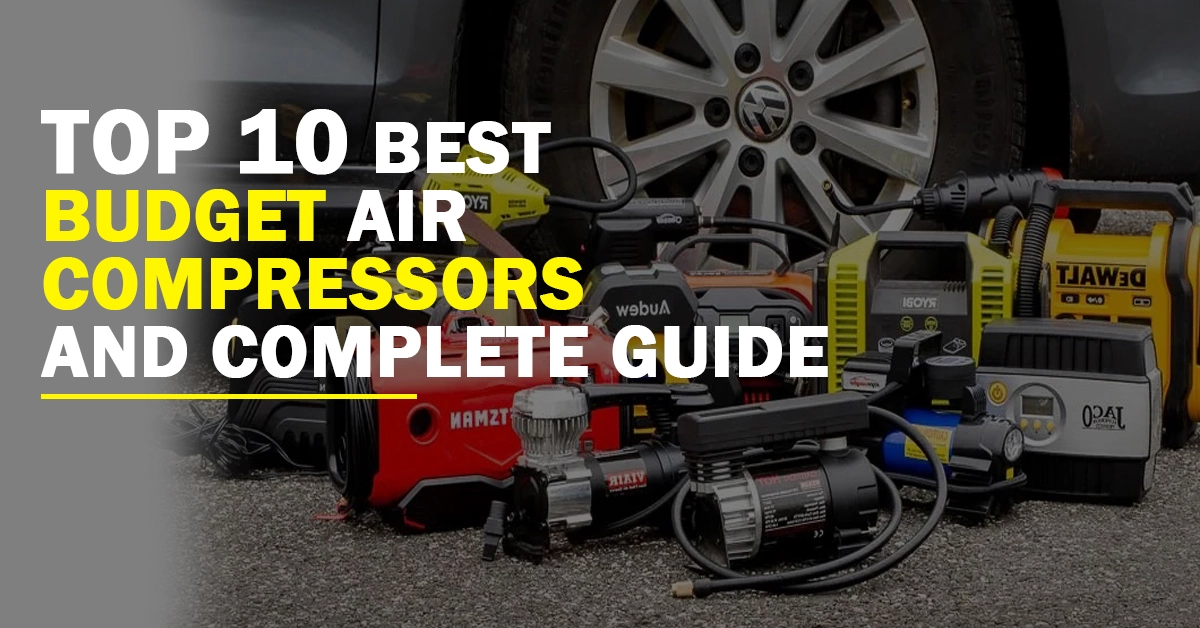
Table of Contents
ToggleIntroduction
An air compressor is a mechanical device that transforms energy into potential energy stored in compressed air using power from an electric motor or a gasoline engine. Spray painting, controlling HVAC systems, powering pneumatic tools, and tire inflation are just a few uses for this pressurized air. The power output, pressure capacity, and airflow rate of an air compressor all affect its efficiency and performance.
Industries like manufacturing, construction, automobile, and aerospace frequently use air compressors. They are also commonly utilized in home settings for a variety of functions, such as powering hobbyist airbrushes and inflated sporting goods.
The kind of compressor (such as reciprocating, rotary screw, or centrifugal), the horsepower (HP), the cubic feet per minute (CFM) of airflow, the maximum pressure output, and the tank capacity are crucial considerations when choosing an air compressor.
In conclusion, portable air compressor offers a dependable source of power for a number of uses, making them a necessary appliance in numerous businesses and homes.
The importance of air compressors in various applications
Air compressors are essential in a wide range of contexts, including industrial and domestic ones. They are crucial in many sectors and activities because they provide a dependable source of compressed air that can be utilized to power a range of products and equipment.
Pneumatic equipment like drills, saws, and grinders are frequently powered by air compressors in the manufacturing industry. Additionally, they are utilized in assembly line processes where pressurized air is used to run equipment and move items. Air compressors are used in the construction sector for a variety of tasks, such as powering jackhammers, nail guns, and paint sprayers.
There are many other uses for air compressors outside only industrial ones. Additionally, they are frequently used in homes to power airbrushes for hobbies, inflate tires, and run air tools in in-home workshops.
Air compressors are not only adaptable and dependable but also productive and economical. They are an environmentally favourable choice because they consume less energy than many other power sources. They are a sensible option for a variety of settings because they require less upkeep than other forms of equipment.
In general, air compressors are a crucial tool in a variety of applications because they provide a dependable source of compressed air that can effectively and affordably power machines and equipment.
challenge of finding the perfect balance between cost and performance
It can be very difficult to choose an air compressor that strikes the ideal mix between price and performance. Although it could seem like a good approach to save money to choose a less expensive model, doing so could eventually result in worse performance and more maintenance costs. However, investing in a high-performance model might be expensive and not necessarily necessary.
The horsepower (HP) of the compressor is an important consideration. While models with higher HP may have more power and efficiency, they are also more expensive. When deciding on the proper HP level, it’s crucial to take the application’s unique requirements into account.
The airflow in cubic feet per minute (CFM) is another crucial element. Higher CFM ratings can result in faster and more effective performance, but they can also be more expensive and necessitate larger compressor tanks.
The type of compressor—such as centrifugal, rotary screw, or reciprocating—must also be taken into account. The choice will depend on the specific needs of the application because each type has advantages and disadvantages.
When selecting an air compressor, it’s critical to thoroughly assess the application’s unique requirements and strike a balance between the desired performance and the available budget. Finding the greatest solutions and ensuring a fair balance between cost and performance can both be accomplished by working with an informed supplier.
Factors to consider when choosing a budget air compressor
Performance of air compressor
A few of the crucial factors that can be utilized to evaluate an air compressor’s performance include its power output, pressure capacity, and airflow rate.
An air compressor’s power output, which is commonly expressed in horsepower (HP), influences how much work it can accomplish. Greater power and efficiency can be delivered by higher HP models, making them suited for heavy-duty applications.
The highest pressure that an air compressor is capable of producing is determined by its PSI (pounds per square inch) pressure capacity. It’s crucial to select an air compressor with the right PSI rating for the job at hand because different applications could call for different pressure levels.
An air compressor’s capacity is determined by the airflow rate, which is expressed in cubic feet per minute (CFM). While higher CFM ratings might result in faster and more effective performance, they also call for a bigger compressor tank which can be more expensive.
The size of the tank, duty cycle, and compressor type (such as centrifugal, rotary screw, or reciprocating) are other elements that can affect how well an air compressor performs. When choosing an air compressor for a particular purpose, it’s critical to take into account all of these variables.
In the end, an air compressor’s performance will be determined by its capacity to provide the required amount of power, pressure, and airflow for the job at hand.
Horsepower (HP)
When choosing an air compressor, horsepower (HP) is a crucial consideration. HP is a measurement of the motor’s power output, which powers the compressor pump. The motor can provide more power and the compressor can perform more work with a higher HP rating.
It’s crucial to take the application’s unique requirements into account when picking an air compressor and to pick a model with the proper HP level. A compressor with low HP may have trouble providing enough power for demanding activities, whereas a compressor with excessive HP may be overkill and overpriced.
It’s vital to remember that an air compressor’s performance is not just dependent on its HP rating. Performance can also be impacted by additional elements like pressure capacity, airflow rate, and tank size. For instance, a compressor with a high HP rating but a small tank or low CFM rating might not be able to deliver enough airflow.
In conclusion, it’s essential to choose an air compressor for cars that offers a suitable balance of power, pressure, and airflow, while also taking into account the specific requirements of the application. Having a knowledgeable supplier on your side can assist you in making the best decision and ensuring superior results.
Cubic feet per minute (CFM)
When choosing an air compressor, cubic feet per minute (CFM) is a crucial performance metric to take into account. The CFM scale determines how much air a compressor can produce each minute. The performance of the compressor in diverse applications is impacted by this parameter, making it crucial to take into account.
Different levels of CFM are needed for various purposes. For instance, sanders, grinders, and impact wrenches need a greater CFM rating to function properly. Similarly, to this, a constant flow of air is necessary for paint sprayers and other pneumatic instruments to function correctly.
It’s crucial to select an air compressors model with a CFM rating that is suitable for the application. It’s possible that the tool or piece of equipment won’t function properly if the compressor’s CFM rating is too low. A compressor may cost more than necessary if the CFM rating is set too high.
When evaluating CFM, the size of the compressor tank is also crucial. A steady airflow can be maintained for a longer period of time using compressors with larger tanks than those with smaller tanks, which may require more frequent cycling.
Pressure (PSI)
When choosing an air compressor, pressure capacity, expressed in pounds per square inch (PSI), is also crucial to take into account. The maximum pressure that the compressor can produce, or PSI, is a crucial parameter to take into account because it establishes the kinds of activities that the compressor is capable of handling.
There are various PSI requirements for various applications. For instance, greater PSI levels are frequently necessary for equipment like impact wrenches and sandblasters to function properly. Similarly, to this, certain pneumatic instruments and apparatus need constant pressure to function effectively.
It’s important that you select an air compressor with the right PSI rating for the job when making your selection. The PSI rating of the compressor must be high enough for the tool or equipment to function effectively. The compressor may cost more than necessary if the PSI rating is too high.
When assessing PSI, it’s crucial to take the size of the compressor tank into account. Compressors with larger tanks are usually able to produce greater PSI levels and sustain constant pressure for longer, whereas compressors with smaller tanks might need to cycle more frequently to sustain constant pressure.
Tank Capacity
Tank capacity is yet another important factor to consider when selecting a certain air compressor type. The size of the tank impacts how much air the compressor can create and how long it can maintain a continuous flow of air, as well as how much air it can hold.
Larger tank sizes can provide a more consistent flow of compressed air over a longer period of time for applications that call for it, such as spray painting or sandblasting. However, larger tanks may cost more and require more space.
Smaller tank sizes are generally more economical and take up less space, but they could necessitate more frequent compressor cycling to keep the airflow steady. This may result in reduced efficiency and affect how well some tools and equipment work.
When choosing an air compressor, it’s crucial to take the application’s unique requirements into account and pick a tank size that can deliver the required volume of compressed air. To do this, one must take into account the size and complexity of the tools or equipment being utilized, as well as requirements for the compressor’s duty cycle, PSI, and needed CFM.
Portability
When choosing an air compressor for a particular purpose, portability is another crucial consideration. Portability is a characteristic of an air compressor to be easily moved from one place to another, and it is necessary for applications that need the air compressor to be operated on-premises or in various places.
Size, weight, and the kind of wheels or handles an air compressor has are all elements that affect how portable it is. Larger compressors with heavier designs and no handles may be more challenging to transport than smaller compressors with lighter designs and integrated handles.
It’s crucial to take the needs of the application into account when choosing a portable air compressor and to go with a portable type. This can entail picking a model with a more compact design or a lower tank size, as well as taking into account the kinds of wheels or handles that make moving the device easier.
When assessing mobility, it’s crucial to take the compressor’s power supply into account. While gasoline-powered compressors may be more adaptable, they may also require more maintenance. As a result, electric-powered compressors are often easier to travel because they may be used anywhere there is access to an electrical outlet.
Weight
When choosing a model for a particular application, an air compressor’s weight is a crucial consideration. The compressor’s weight affects its portability, simplicity of usage, and the amount of storage space it needs.
Smaller compressors are an excellent option for applications where mobility is crucial because they are often lighter and more portable. Smaller compressors, however, might not be able to deliver enough force or airflow for specific jobs.
Larger compressors can deliver greater power and airflow for heavy-duty applications, but they are often heavier and less portable. Additionally, they might have bigger tanks, enabling longer durations of continuous use.
When choosing an air compressor, it’s crucial to take the application’s particular requirements into account and pick a model with the right weight. To do this, one must take into account the size and complexity of the tools or equipment being utilized, as well as requirements for the compressor’s duty cycle, PSI, and needed CFM.
The compressor’s wheels or handles should be carefully considered as they may affect how easily it can be moved and transported.
It’s critical to select an air compressor with the proper weight to ensure top performance and efficiency across a variety of applications. Finding the best possibilities and making sure the compressor satisfies the application’s unique requirements can both be facilitated by working with an informed provider.
Wheels and handles
When choosing a model of air compressor for a particular purpose, it’s crucial to take the air compressor’s wheels and handles into account. These qualities improve the compressor’s portability and use, making it simpler to carry and transport from one place to another.
Larger compressors are frequently equipped with wheels, which makes it simpler to transport them across varied surfaces like gravel or concrete. They can be made from materials like rubber or plastic and come in a range of sizes and forms.
Smaller compressors frequently have handles, which make it possible to lift and move the compressor by hand. They can be made of materials like plastic or metal and come in a variety of sizes and shapes.
It’s crucial to choose an air compressor that is simple to move around and transport by taking into account the types of wheels and handles that are available. This involves taking into account the compressor’s size, weight, and the types of surfaces it will be moved over.
When analyzing the wheels and handles, it’s crucial to keep the compressor’s power source in mind. Electric-powered compressors are typically lighter and easier to move because they don’t have a fuel tank, whereas gasoline-powered compressors may require stronger wheels and handle to support their weight.
An essential consideration is the air compressor’s noise level, particularly in environments where noise can be an issue, like residential neighborhoods or indoor workspaces. Usually measured in decibels (dB), the noise level of an air compressor can vary significantly depending on the model.
Electric-powered air compressors are often quieter than gasoline-powered machines and smaller air compressors are typically quieter than bigger models. In addition, some versions might have noise-canceling components like insulated motor compartments or sound-absorbing materials.
It’s crucial to choose an air compressor that is suitable for the environment by taking into account the application’s specific noise needs. This could entail choosing a device with a lower dB rating or one that
Noise level
The noise produced by an air compressor can differ significantly depending on factors such as its size, type, and design. This noise is typically measured in decibels (dB). Air compressors can range from relatively quiet ones, producing around 40-60 dB of noise, to much louder models generating 70-90 dB or even more.
For indoor applications, such as hobbyist workshops, where noise is an issue, quieter air compressors, such as those with a low noise level of 40–60 dB, are frequently employed. Larger and more potent compressors, like those found in industrial settings, can make a noticeable amount of noise, frequently reaching 80-90 dB or higher. If suitable hearing protection is not worn, these noise levels may be hazardous to human hearing.
An air compressor’s noise level can be affected by a number of variables, including the compressor’s type, size, power, design, construction quality, enclosures, insulation, and maintenance. Consider selecting a quieter compressor model, enclosing the compressor in insulation, or donning hearing protection when working close to noisy compressors to reduce noise levels.
Oil-free vs. oil-lubricated air compressor
Air compressors either with or without oil are both frequently used, and each type has benefits and drawbacks. Here is a comparison:
Oil-free air compressors:
- Maintenance: Oil-free compressors require less maintenance since there’s no need to check or replace the oil.
- Clean air: Because they don’t introduce oil into the compressed air, these compressors are perfect for applications that call for clean air, like painting or medical equipment.
- Lightweight and portable: Oil-free compressors tend to be lighter and more portable, making them suitable for home or small workshop use.
- Noise level: These compressors can be noisier than their oil-lubricated counterparts.
- Durability: Oil-free compressors usually have a shorter lifespan due to increased wear on the internal components, as there’s no oil to lubricate the moving parts.
Oil-lubricated air compressors:
- Maintenance: These compressors require regular oil checks and changes, which can be time-consuming and add to the overall cost of ownership.
- Air quality: Oil-lubricated compressors can introduce oil into the compressed air, which can be problematic for certain applications.
- Weight and portability: These compressors tend to be heavier and less portable than oil-free models.
- Noise level: Oil-lubricated compressors are generally quieter than oil-free ones due to the lubrication provided by the oil.
- Durability: The presence of oil helps to reduce wear on the internal components, resulting in a longer lifespan for the compressor.
Consider your individual demands and requirements when deciding between an oil-free and an oil-lubricated air compressor. Oil-lubricated compressors are the superior option for heavy-duty use and where quieter operation is required, whereas oil-free compressors are well-suited for clean air applications and circumstances where little maintenance is a necessity.
When purchasing an air compressor, it’s crucial to take warranty and brand reputation into account. This is why:
An air compressor’s brand reputation can provide you with information about its dependability and quality. Look for companies that have a solid track record of making compressors that are both high-quality and durable. To get a sense of how the brand’s compressors function in actual applications, read user evaluations and ratings.
A warranty is a manufacturer’s promise that the compressor will function as intended for a specific time period. Look for compressors with warranties that are appropriate in length and provide both parts and labor coverage. You can feel secure and protected from unforeseen repair costs with a decent warranty.
When buying an air compressor, it’s important to consider the brand reputation and warranty
Top 10 best budget air compressor
1. Bostitch BTFP02012 6-Gallon 150 PSI Oil-Free Compressor
With its strength and durability, the Bostitch BTFP02012 air compressor can help you do a range of jobs swiftly and effectively. With its 6-gallon tank and 150 PSI maximum pressure, this compressor enables you to do even the most difficult tasks with ease.
This compressor’s oil-free pump, which removes the need for routine maintenance and makes it simpler to use, is one of its primary characteristics. Long-term time and money savings come from not having to worry about oil leaks or oil filter changes.
A high-flow regulator and couplers are additional features of the Bostitch BTFP02012 that enable maximum effectiveness and efficiency. The regulator guarantees that you get the ideal amount of pressure for each activity, and it makes it simple to connect a variety of tools and accessories to the compressor.
The design of this compressor also makes it portable and simple to relocate. Because of its small size and low weight, as well as its handle and wheels, it is simple to move from one place to another. This makes it ideal for usage in a range of situations, including DIY tasks at home and building sites.
2. Porter-Cable C2002 6-Gallon 150 PSI Pancake Compressor
A strong and effective tool created for a variety of purposes is the Porter-Cable C2002 Pancake Compressor. This compressor has a 6-gallon tank and a 150 PSI maximum pressure, which is sufficient for the majority of tasks.
This compressor’s pancake-shaped design, which makes it simple to store and move, is one of its important characteristics. Due to its low profile and small size, it can be stored in small locations and won’t take up much room in your garage or workshop.
Additionally, the Porter-Cable C2002 has an oil-free pump that removes the need for routine maintenance over time, saving you both time and money. The pump will last longer than standard oil-based pumps, and you won’t need to worry about oil leaks or replacing oil filters.
This compressor also has a quick-connect coupler that makes it simple to attach and detach your tools. When working on many projects at once, this feature makes it possible for you to swiftly and effectively switch between them.
You may also regulate the amount of pressure required for each activity with the Porter-Cable C2002’s high-flow regulator and pressure gauge. You won’t have to worry about over- or under-inflating your tires or equipment since this function guarantees that you obtain the ideal amount of pressure for each task.
3. California Air Tools CAT-1P1060S Light & Quiet Portable Air Compressor
Designed for a range of tasks, the California Air Tools CAT-1P1060S portable air compressor is compact and quiet. This compressor is lightweight at only 29 pounds, making it simple to transport it from one place to another.
This compressor’s oil-free pump, which needs extremely little maintenance and doesn’t require routine oil changes, is one of its important characteristics. This saves time because it allows you to run the compressor for extended periods of time without having to stop and do maintenance.
Additionally, the CAT-1P1060S runs significantly more quietly than conventional compressors, with an operating noise level of only 56 db. It means that you won’t need to wear ear protection while using it and that you may use it indoors without bothering others.
The California Air Tools CAT-1P1060S can generate up to 1.2 CFM at 90 PSI despite its small size, which is sufficient power to run a range of tools and inflate tires. Additionally, it has a 120 PSI maximum pressure, which is appropriate for the majority of applications.
Furthermore, this compressor has a quick-connect adapter that makes it simple to attach and detach your tools as well as an easy-to-use control panel with a pressure gauge. The coupler keeps your tools firmly fastened, and the pressure gauge lets you change the pressure to suit your requirements.
4. Senco PC1010 1-Gallon 1/2 HP Electric Compressor
Senco’s PC1010 Electric Compressor is a portable, lightweight instrument with a variety of uses. This compressor has a 1-gallon tank and a 1/2 HP motor, and it can deliver a maximum pressure of 125 PSI.
This compressor’s small size, which makes it simple to store and move, is one of its important characteristics. One of the lightest compressors available on the market, it just weighs 20 pounds. Contractors or do-it-yourselves who need to relocate the compressor from one job site to another will find this function to be extremely helpful.
The Senco PC1010 is a compact, powerful compressor that can generate adequate pressure to run the majority of air tools.
Additionally, this compressor boasts an oil-free pump that requires little upkeep and does away with the requirement for oil changes. Long-term time and money savings are realized thanks to this feature, which also makes sure the compressor operates smoothly and effectively.
You can change the pressure in the Senco PC1010 to meet your needs thanks to a pressure switch and a pressure gauge. It is simple to manage the pressure and complete the task at hand because the gauge is easy to see and the switch is quick to use.
5. DEWALT DWFP55126 6-Gallon 165 PSI Pancake Compressor
High-performance pancake compressor for both professional and do-it-yourself use is the DEWALT DWFP55126. This compressor can tackle a range of chores with ease because to its 6-gallon tank and maximum pressure of 165 PSI.
This compressor’s pancake-shaped design, which makes it simple to store and move, is one of its important characteristics. Due to its low profile and small size, you can store it in confined locations and it won’t take up much room in your garage or workshop.
Additionally, the DEWALT DWFP55126 has an oil-free pump, which removes the need for routine maintenance and, over time, saves you both time and money.
This compressor’s high-flow regulator and couplers, which enable optimal performance and efficiency, are another fantastic feature. The regulator guarantees that you get the ideal amount of pressure for each activity, and it makes it simple to connect a variety of tools and accessories to the compressor.
The DEWALT DWFP55126 also boasts a quick-connect coupler and a compact control panel that makes it simple to attach and detach your tools. The coupler keeps your tools firmly attached, and the gauge lets you change the pressure to meet your demands.
6. Campbell Hausfeld DC060500 6-Gallon Quiet Air Compressor
A strong and silent air compressor, the Campbell Hausfeld DC060500 is made for both professional and do-it-yourself applications. This compressor can perform a range of chores with ease because to its 6-gallon tank and a maximum pressure of 125 PSI.
The low noise level of this compressor, which makes it perfect for usage indoors, is one of its primary benefits. It runs at 68 decibels, which is significantly less noise than conventional compressors. This implies that you won’t need to wear ear protection while using it and that you may use it in your garage or workplace without disturbing others.
A further advantage of the Campbell Hausfeld DC060500 is its oil-free pump, which removes the need for routine maintenance and helps you save time and money.
This compressor’s quick-connect coupler, which makes it simple to attach and detach your tools, is another fantastic feature. When working on many projects at once, this feature makes it possible for you to switch between tools fast and effectively.
The Campbell Hausfeld DC060500 also features a handy control panel with a pressure gauge so you can modify the pressure to suit your needs. It is simple to control the pressure and complete the task at hand because the gauge is easy to read and the controls are intuitive to use.
7. WEN 2289 10-Gallon Oil-Free Vertical Air Compressor
The WEN 2289 is a strong and long-lasting vertical air compressor made for a variety of uses. This compressor has a 10-gallon tank and a maximum pressure of 150 PSI, making it capable of handling even the most difficult tasks.
This compressor’s oil-free pump, which needs extremely little maintenance and doesn’t require routine oil changes, is one of its important characteristics. This saves time because it allows you to run the compressor for extended periods of time without having to stop and do maintenance.
The vertical shape of the WEN 2289 also makes it simple to transport and store. Its small size means that it won’t take up a lot of room in your garage or workshop, and the wheels make it simple to move.
This compressor has a maximum airflow capacity of 4.0 CFM at 90 PSI, which is sufficient to power a number of tools and inflate tires. Additionally, it has a 150 PSI maximum pressure, which is adequate for the majority of applications.
The WEN 2289 also features two quick-connect couplers and a handy control panel that make it simple to attach and detach your equipment. Couplers make sure that your tools are permanently linked, and the gauge lets you change the pressure to suit your requirements.
8. AstroAI Portable Air Compressor Pump 100 PSI
You can quickly and simply blow up your tires and other inflatables with the AstroAI Portable Air Compressor Pump, a small and handy device. This compressor, which has a 100 PSI maximum pressure, is appropriate for the majority of applications.
The portability of this compressor pump is one of its primary characteristics. It is ideal for usage on the go because it is portable and lightweight. It won’t take up a lot of room and is simple to keep in your glove box or trunk.
Additionally, this compressor pump is very simple to use. You can adjust the pressure on it according to your demands thanks to its straightforward control panel, which comprises an LCD screen and four buttons.
A built-in LED light on the AstroAI Portable Air Compressor Pump also enables you to utilize it in dim lighting. The light can save your life in an emergency since it is bright enough to make it easier to see what you are doing.
All things considered, the AstroAI Portable Air Compressor Pump is a dependable and practical device that works great for inflated tires and other inflatables. This compressor pump is a terrific investment for anyone who needs a dependable tool for their projects or in case of emergencies due to its mobility, user-friendly control panel, and built-in LED light.
9. Craftsman CMEC6150 6-Gallon 150 PSI Air Compressor
A strong and effective air compressor made for a variety of uses is the Craftsman CMEC6150. This compressor has a 6-gallon tank and a maximum pressure of 150 PSI, making it capable of handling even the most difficult tasks.
This compressor’s oil-free pump, which needs extremely little maintenance and doesn’t require routine oil changes, is one of its important characteristics. This saves time because it allows you to run the compressor for extended periods of time without having to stop and do maintenance.
A high-flow regulator and couplers are further characteristics of the Craftsman CMEC6150 that enable for optimal effectiveness and efficiency. The regulator guarantees that you receive the ideal level of pressure for a variety of tools and accessories that you can easily attach to the compressor.
This compressor has a maximum airflow capacity of 2.6 CFM at 90 PSI, which is sufficient to run a number of tools and inflate tires. Additionally, it has a 150 PSI maximum pressure, which is adequate for the majority of applications.
A pressure gauge and a quick-connect coupler on the Craftsman CMEC6150’s compact control panel make it simple to attach and detach your tools. The gauge enables you to change the pressure to suit your demands while the coupler ensures that your tools are kept safely linked.
10. EPAuto 12V DC Portable Air Compressor Pump
You can rapidly and effectively inflate your tires and other inflatables with the help of the EPAuto 12V DC Portable Air Compressor Pump. This compressor, which has a 100 PSI maximum pressure, is appropriate for the majority of applications.
The portability of this compressor pump is one of its primary characteristics. It is ideal for usage on the go because it is portable and lightweight. It won’t take up a lot of room and is simple to keep in your glove box or trunk.
Additionally, this compressor pump is very simple to use. You can adjust the pressure on it according to your demands thanks to its straightforward control panel, which comprises an LCD screen and four buttons.
Additionally, you may use the EPAuto 12V DC Portable Air Compressor Pump in low light thanks to its included LED light. The light can save your life in an emergency since it is bright enough to make it easier to see what you are doing.
Additionally, this compressor pump includes an automated shut-off feature, which causes it to stop once the necessary pressure is reached. With the help of this feature, you can avoid overinflating your tires or other inflatables while also saving time and effort.

FAQ
You should think about the compressor’s dimensions, power output, air capacity in cubic feet per minute (CFM), maximum pressure in pounds per square inch (PSI), noise output, durability, and additional features such as portability and accessories that come with the purchase.
The answer is that budget air compressors can, in fact, be used for a range of jobs; however, whether or not they are suitable for professional use is going to rely on the particular requirements of the job as well as the performance capabilities of the compressor.
These activities may be manageable with certain low-cost air compressors, but it’s crucial to check the CFM and PSI values of the compressor to make sure they fulfill the requirements of the particular items you’ll be utilizing.
Performing routine maintenance on your air compressor, such as monitoring the belts and hoses for wear and tear, replacing the oil (if necessary), ensuring that the filters are clean, and checking for air leaks, will help your air compressor last longer and operate more effectively.
The use of suitable protective clothing, maintaining a clean and well-ventilated work space, adhering to the manufacturer’s requirements for operation and maintenance, and checking that the pressure relief valve on the compressor is operating correctly are all necessary safety precautions.







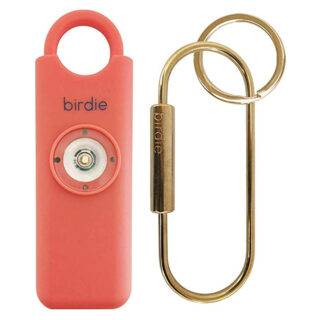


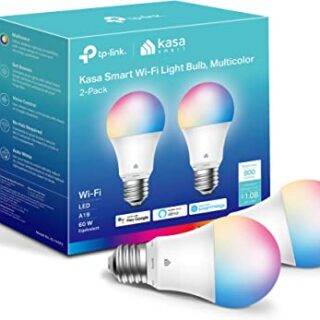
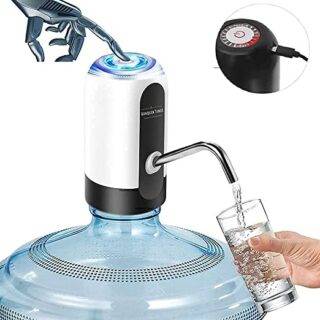

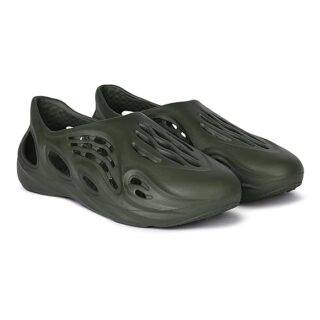


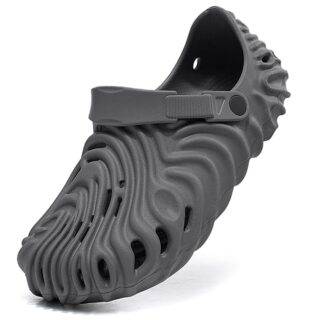
Leave a Reply